These days I am more than ever "anti" the big corporations and prefer to support smaller, independent - and especially local - businesses whenever possible. It was therefore with great pleasure that I was recently able to attend an Open Day at the Pepperpot Nursery, a business that deals exclusively with growing herbs. Based for some years in Tilford, Surrey, they have recently re-located to Chawton, in Hampshire, which is about 15 miles - less than half an hour's drive - from where we live.
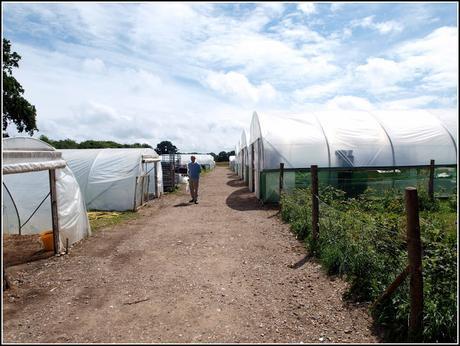
The Pepperpot Nursery is run by a charming but hugely industrious couple, Catherine and Neil, who have set up their new nursery on a Green Field site (literally), with very little extra help. Starting completely from scratch they have put up 15 big polytunnels (done over the Winter by Neil with mostly just one other person to help him, which is no mean feat!), erected a greenhouse and an 8000-litre water-tank, (fed from a newly-drilled 40-metre-deep borehole), in addition to installing extensive irrigation systems, not to mention the machinery required for filling pots and sowing seeds! They moved into the new site only as recently as October 2015, though you wouldn't think so to look at it. Although there are of course plans to improve the site further, a lot has already been achieved in a short space of time, which tells you a lot about the owners of this thriving business.
Neil is a highly-qualified horticulturalist, who had done this type of work for many years as an employee prior to starting up his own business in 1998. Most of his attention these days is directed towards supplying potted herb plants to Garden Centres (and of course much of the maintenance of the nursery). Catherine, who has plenty of experience, but no official qualifications, takes on most of the retail side of things, selling their products at markets, fetes, fairs and other events all over the area. I first became aware of the Pepperpot Nursery through their attendance at the Farnham Farmers' Market, which we sometimes go to, and was immediately struck by the quality and consistency of their wares.
As my readers know, I am an avid cook these days, as well as being a keen gardener. We use lots of herbs in our cooking, and I have been growing them for many years. When we lived in our previous property I had about 65 or 70 different types, but these days I mostly grow a limited range of the more common culinary herbs, like Mint, Thyme, Sage, Chives, Oregano, etc. This doesn't mean I am no longer interested in all the other types, it's simply that I devote most of my efforts to vegetables. It was therefore a big thrill to attend the Pepperpot Nursery Open Day and see how herb plants are produced commercially.
This is where it starts - a "sowing-machine" (no, not a sewing-machine!).
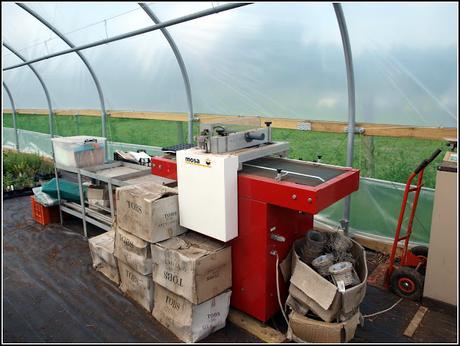
This device quickly puts seeds into modules of compost, saving lots of manual effort, though unfortunately not all seeds can be sown this way, which means they have to be done by hand. Nor can the machine automatically take cuttings!
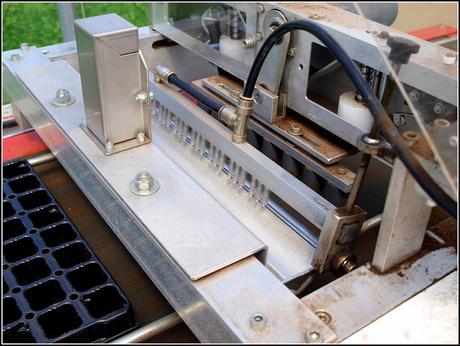
Seeds are sown in units of 3 - i.e. 3, 6, or 9 seeds per module.
When the plastic trays have been sown with seeds, they are placed on multi-tiered trolleys in this greenhouse. I was amazed at how small it is, but Catherine told me that it can accommodate about 20,000 modules!
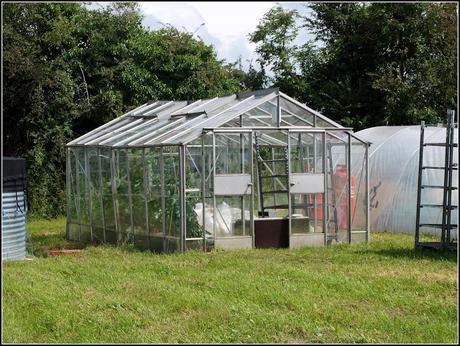
As soon as the seeds germinate they are moved to nursery beds in one of the polytunnels, with underfloor heating for those that require it. The main polytunnels have no artificial heating or lighting. This means that the plants grow strong, not soft and leggy like so many of the mass-produced ones you see in the supermarkets. Many of the plants are not grown from seed at all, but from cuttings, all done by hand.
When the plants are big enough, they are potted-up, usually with the aid of this device - a pot-filling machine, seen here being explained by the lovely Catherine.
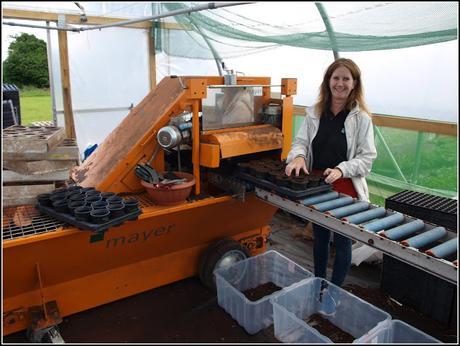
She told us that although the machine fills pots with compost, making holes in the compost for the plants to go in is normally done with a finger!
The potted herb plants are mostly raised in the big polytunnels, though some are kept outside because the tunnels get too warm for them.
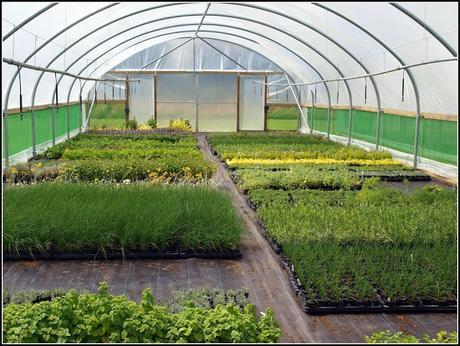
Inside one of the polytunnels
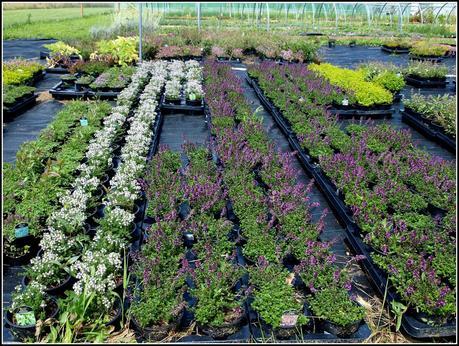
One of the outdoor areas.
The design of the polytunnels is quite cunning too. The lower part of the wall (about a metre, I would say) is made of green mesh, which provides good ventilation, and avoids overheating, but it can be "closed off" by a layer of plastic that can be raised to cover the mesh if weather conditions require it. Many of the tunnels are used only during the Spring and Summer, and during the Winter they are sparsely populated - mostly with cuttings.
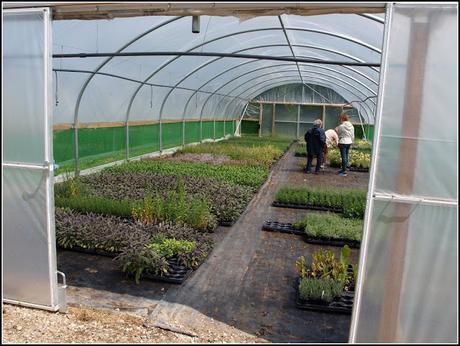
I was curious to find out how many plants Pepperpot Nursery actually produces in a year. Catherine was not completely sure, but she said it would be the best part of 500,000. That's a lot of plants! Most of them end up in little 9cm pots, or bigger 1-litre ones, which account for most of those which are sold in the Garden Centres and markets. Although the nursery is not (yet?) open to the public, Catherine and Neil had set up their retail stall at the nursery just for this occasion, to offer their visitors the opportunity to make a purchase. I felt it would be churlish to come away empty-handed, especially since there was no admission fee and Catherine had given Jane and me a very comprehensive guided tour. I couldn't resist buying a pot of this really spectacular Red Creeping Thyme (left of photo):
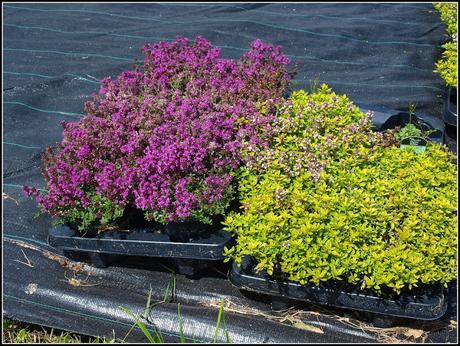
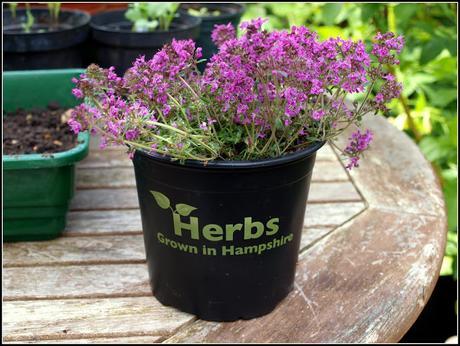
This one came home with us...
Neil and Catherine told us that they are contemplating the prospect of branching out into education - teaching groups of people, possibly schoolchildren, how to grow and appreciate herbs. I think they would be good at this. Catherine was lucid, articulate, informative and patient - just the qualities required of a good teacher. As a former teacher myself, I speak from a position of experience here!
The "packing station" / office of the nursery was delightfully low-key, liberally furnished with well-worn armchairs, piles of half-assembled cardboard boxes, and loveable dog Milly. Round the walls were shelves of plastic plant-labels. Seeing the number of different labels there brought home to me very forcibly the sheer variety of herbs that this business offers.
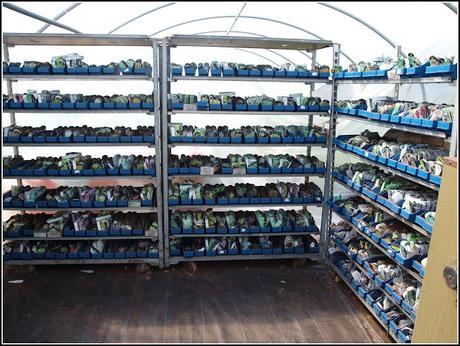
In one of the boxes of labels, a pair of Robins had chosen to make their nest, and we saw their little chicks cheeping away at us, begging to be fed. You don't get much lower-key than that!
One of the areas of the nursery that I enjoyed most was the place where unsold plants end up - ones that have got too big to be saleable, and are just left to "do their own thing". I would love to have a garden like this.
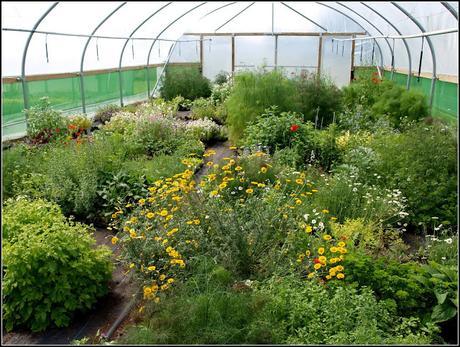
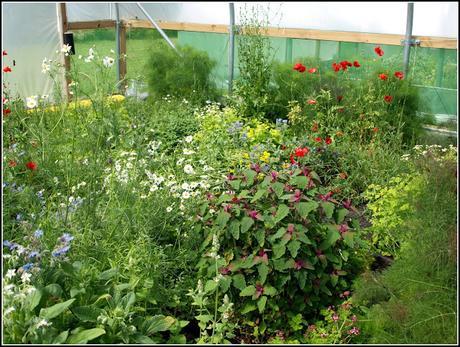
As you can see, there is a lot more to herbs than just culinary herbs. Lots of them are hugely decorative and add lots of color and interest to a garden. Here are a few of those...
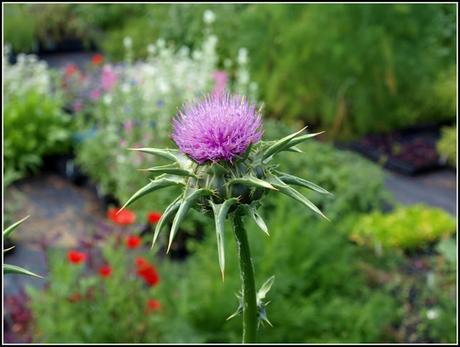
Milkthistle
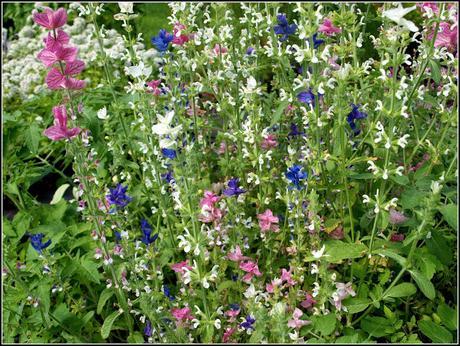
Salvias
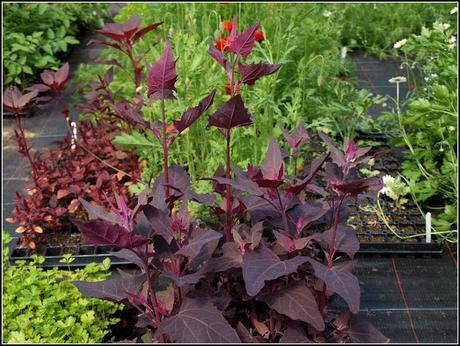
Red Orache
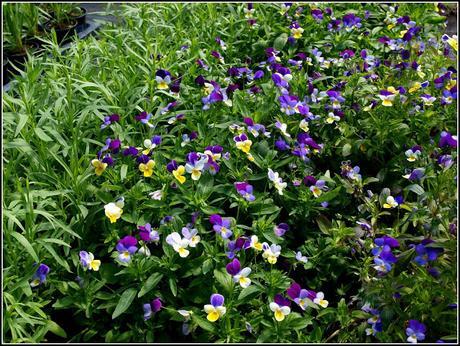
Violas - edible flowers
The question I had most been wanting to ask was "What is your best-selling herb?". I was expecting to be told it was a type of Mint or Thyme, so I was surprised to learn that the best-seller is French Tarragon. Catherine explained that this is probably because it is not commonly found in supermarkets, which generally sell the less flavourful Russian Tarragon.
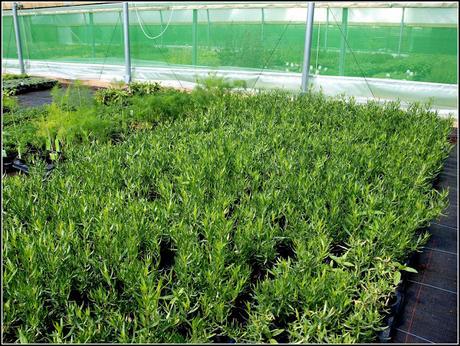
Loads of Tarragon
While were looking around the nursery it was hard to ignore the amount of wildlife that was in evidence. This is a Small Tortoiseshell butterfly, feeding on the nectar from a Golden Thyme.
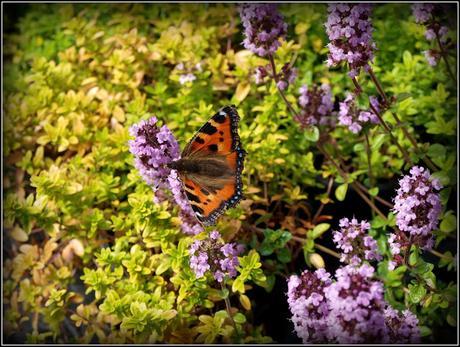
Many herbs are very attractive to wildlife, and I think this is one of the main reasons why people love growing them. These days there is a lot of interest in the gardening community in "planting for the bees", and growing herbs is certainly a good contributor to this.
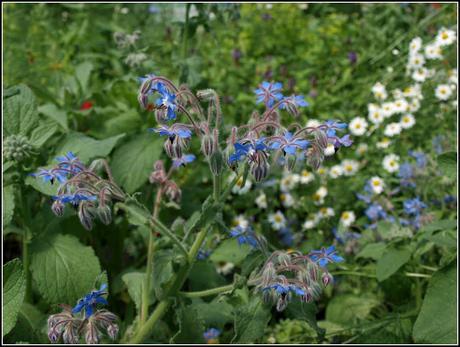
Borage - the bees love this one!
I'll finish my post by recording my thanks to Neil and Catherine for this fascinating insight into their business, and by wishing them every success with their growing venture. Long live the Small Business!
Pepperpot Nursery, Selborne Road, Alton, Hampshire, GU34 3HL. Twitter: @Pepperpotherbs
